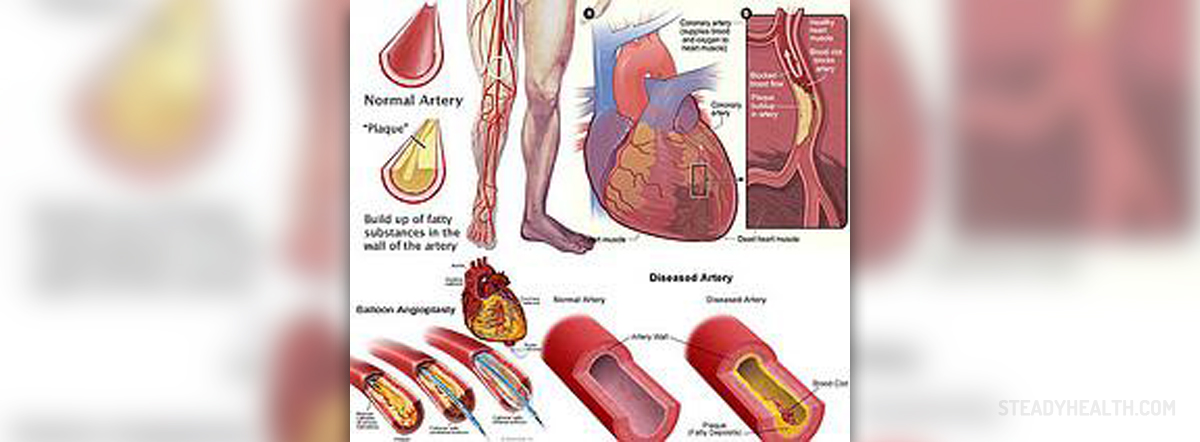
Peripheral arterial disease (PAD) is a medical condition that affects large arteries of the body except from the coronary arteries, aortic arch vasculature and arteries of the brain. The affected blood vessels are narrowed due to the process of atherosclerosis which in the long run causes insufficient blood supply to certain body parts and may eventually result in a complete obstruction to blood flow. Complete blockage is basically associated with stenosis, an embolism or a blood clot formation.
The term peripheral arterial disease is also used for atherosclerotic obstruction affecting the lower limbs and many times refers to a subset of illnesses affecting small blood vessels.Peripheral Arterial Disease Classification
There are different classifications of peripheral arterial disease. According to one the disease can occur in a form of asymptomatic peripheral arterial disease, intermittent claudication, chronic limb ischemia and acute limb ischemia.
Asymptomatic peripheral arterial disease, as the very name suggests, causes no symptoms and signs. However, it can be suspected by clinical examination of the lower limb pedal pulses.
Intermittent claudication is a type of the disease characterized by the occurrence of discomfort in the calf muscles with exertion. The discomfort soon withdraws. The rest is what makes patients feel better. It is estimated that intermittent claudication affects 5% of men and 2.5% of women older than 60 years of age.
Chronic limb ischemia occurs in the form of pain in the lower extremity present both at rest and with exertion. Such patients may also have an ulceration accompanied by tissue necrosis. This is a severe condition and requires aggressive treatment. Left untreated chronic limb ischemia may soon progress into necrosis of different degree which can be only dealt with amputation.
And finally, acute limb ischemia develops rapidly, is connected with limp pain at rest and lack of peripheral pulses. The foot may be painful as well. There is a blood clot that has obstructed a blood vessel in the leg, depriving the lower portions of the leg from blood rich in oxygen and all the necessary nutrients. The obstruction results from a part of the plaque that has ruptured or is a consequence of in situ thrombosis. There is also chance that a blood clot has formed in proximal blood vessels and then moved towards the legs. The treatment for acute limb ischemia must be prompt in order to prevent amputation.
Treatment and Lifestyle with Peripheral Arterial Disease
Treatment for peripheral artery disease is conceived in such a way to deal with symptoms and signs caused by the process of atherosclerosis and to prevent further progression of this process. Atherosclerosis affects many blood vessels, not just those in the lower limbs. It is a leading cause of heart attack and stroke. Apart from treatments recommended by doctors, patients with peripheral arterial disease can significantly benefit from lifestyle changes.
As far as medicamentous therapy is concerned, there are several groups of drugs, all of which can be prescribed to such patients. For instance, patients in whom the level of cholesterol is increased are due to take cholesterol-lowering drugs known as statins. LDL or low-density lipoprotein is the one that needs to be reduced while HDL (high-density lipoprotein) should be as high as possible. HDL acts against atherosclerosis. Antihypertensives regulate high blood pressure. This way the wall of blood vessels remains intact which prevents atherosclerosis to certain extent. There is connection between hyperglycemia and atherosclerosis. So, all patients must maintain proper level of glucose in blood, which is achieved with dietary changes, oral hypoglycemic agents or insulin. Patients prone to blood clots additionally take anticoagulants and finally, there are medication that increase the blood flow through the already narrowed blood vessels. One of them is cilostazol.
Surgery is reserved for patients in whom medications cannot alleviate symptoms and in those who have developed complications of peripheral arterial disease. Angioplasty is a surgical procedure during which the surgeon inserts a catheter in the affected blood vessel. There is a balloon at the end of the catheter. Once the tube reaches the desirable place, the balloon is inflated. It flattens the blockage and stretches the blood vessels. Stenting is another procedure performed to expand the lumen of the affected blood vessels. By-pass surgery is a bit different from the previous two because the surgeon uses a blood vessel from other parts of the body and creates a graft. Grafting can be also done with a blood vessel made of synthetic fabric.
Lifestyle changes these patients are supposed to implement include smoking cessation and dietary changes. One should be exercising on regular basis. However, prior to engaging in any strenuous activity or sport, patients should consult their health care provider. Individuals suffering from claudication may benefit from specially designed exercise rehabilitation plan.
Also, those in whom peripheral arterial disease has progressed significantly are supposed to take good care of their feet. Any change such as ulcers, bunions, calluses or any kind of injury must be reported and treated immediately.






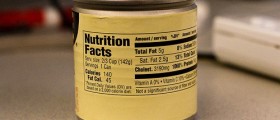

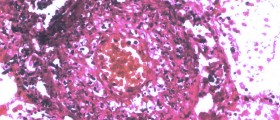



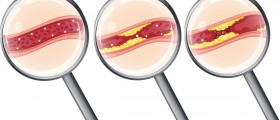
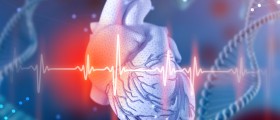



Your thoughts on this
Loading...